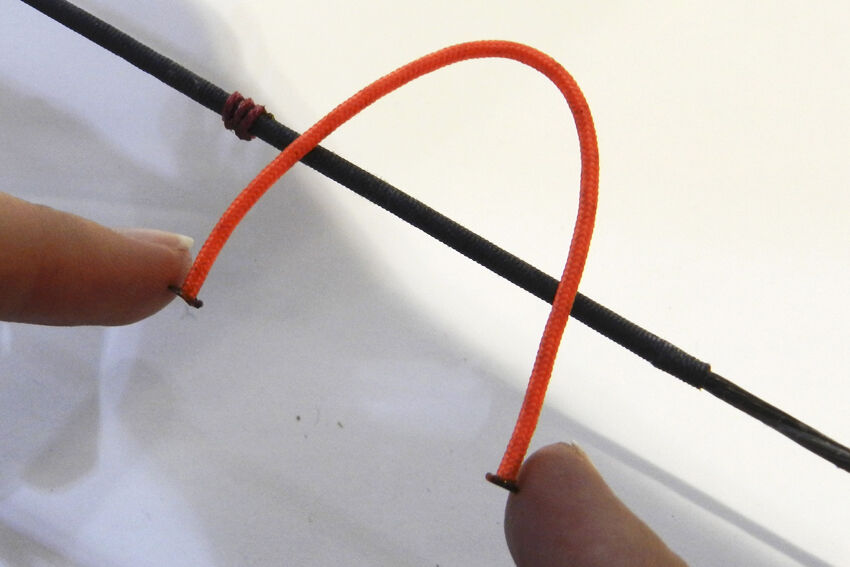Archery 101: How to tie a D-loop
One of the features of a compound set-up that makes it so accurate is the ability to use a mechanical release aid (rather than fingers) to pull, and then release, the bow string.
Release aids don’t attach directly to the string itself, though, instead securing to a D-loop that prevents wear and tear, through removing undue pressure – and ensures the arrow isn’t twisted or pressured by the string at full draw.
Because it’s the only connection between the archer drawing, aiming and releasing and string, having a quality and consistent D-loop is essential for successful shooting. Here’s how to tie your own…
Gear
To tie a D-loop, you will need:
- Lighter
- D-loop cord
- D-loop pliers
Step 1

Cut a length of D-loop cord (roughly eight centimetres is a good amount to start with) and prepare it for tying. To do this, press the end of the cord until it frays, then heat it gently with a lighter until it catches flame.
As soon as this happens, blow out the flame and quickly press the hot end of the cord onto a flat, non-flammable surface. A mushroom shape will form at the end of the cord.
Repeat the process on the other end of the cord.
Step 2
Prepare your string with a nocking point (one point is necessary, a second is optional). See the article on how to tie a nocking point if you need to learn this.
Step 3

Curve the nocking point over the string, above the nocking point, with the bulge facing away from the riser.
Step 4

Loop the two ends of the cord underneath the string and back through the loop of the cord.
Step 5

Pull one of the end of the cord until the loop tightens around the string. The mushroom should be wide enough so that it catches when pulled tight, and doesn’t pull through the loop.
Step 6

Pull it really tight!
Step 7

Loop the free end of the cord around the nocking point to start the bottom anchor for the D-loop.
Step 8

Push the cord under the string, and back through the loop.
Step 9
Push the cord behind the string once again, then loop it back under itself, allowing the mushroom to catch inside the loose knot that has formed.
Step 10

Tighten the knot, and make sure it’s secure, by pushing a hex key up and away from the string to stretch the loop out.
You’ll need to make sure you leave enough space for the nock of the arrow here – and the easiest way to do that is to attach a (slightly bigger) nock to the string while you’re securing it.
Step 11

Make any adjustments to the D-loop’s alignment by shuffling the knots, then use D-loop pliers to firm the knots up. (Attach a nock here, too, if you want to be sure you’ve left enough space.)
Now your D-loop is ready to shoot!









